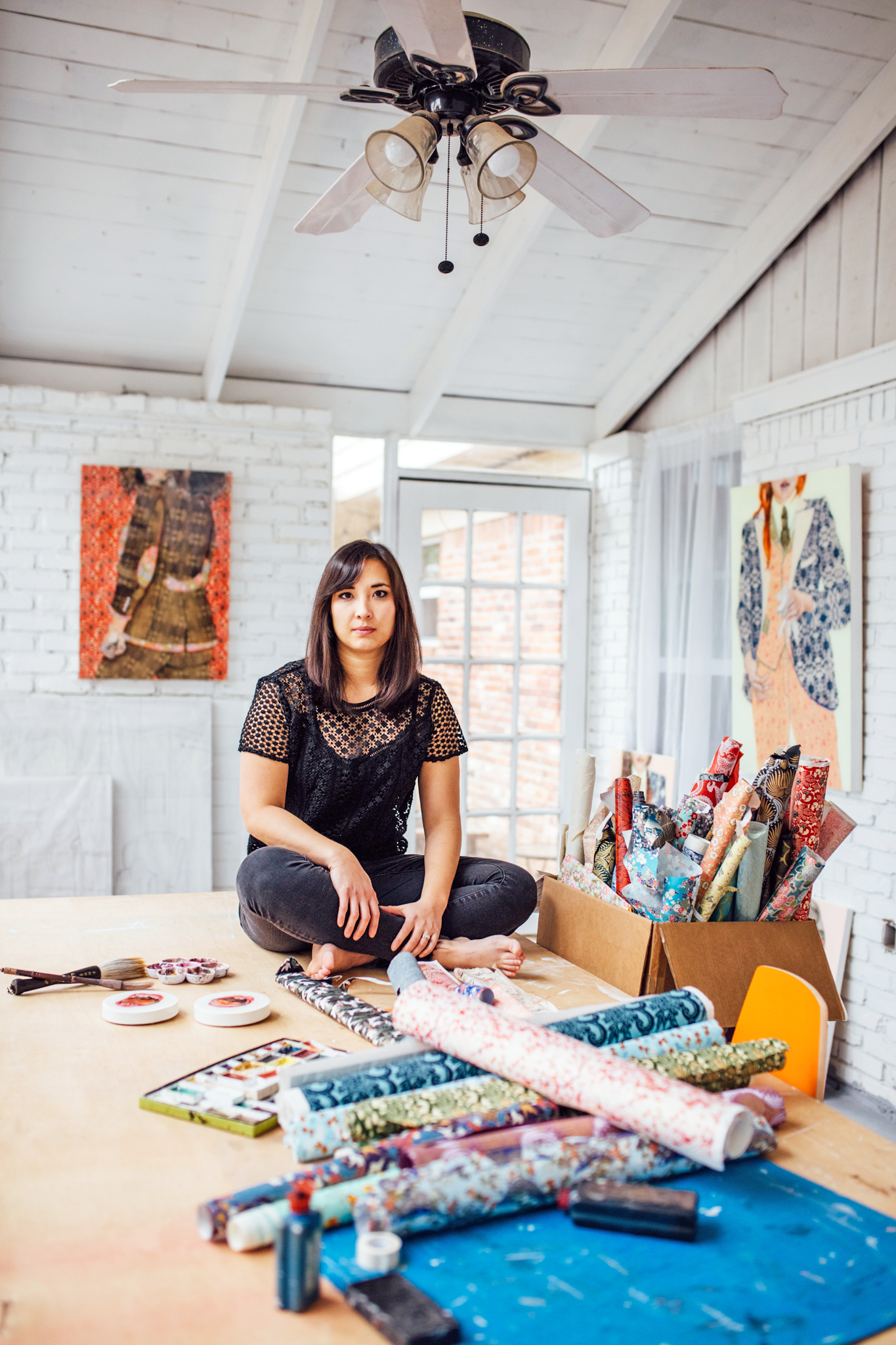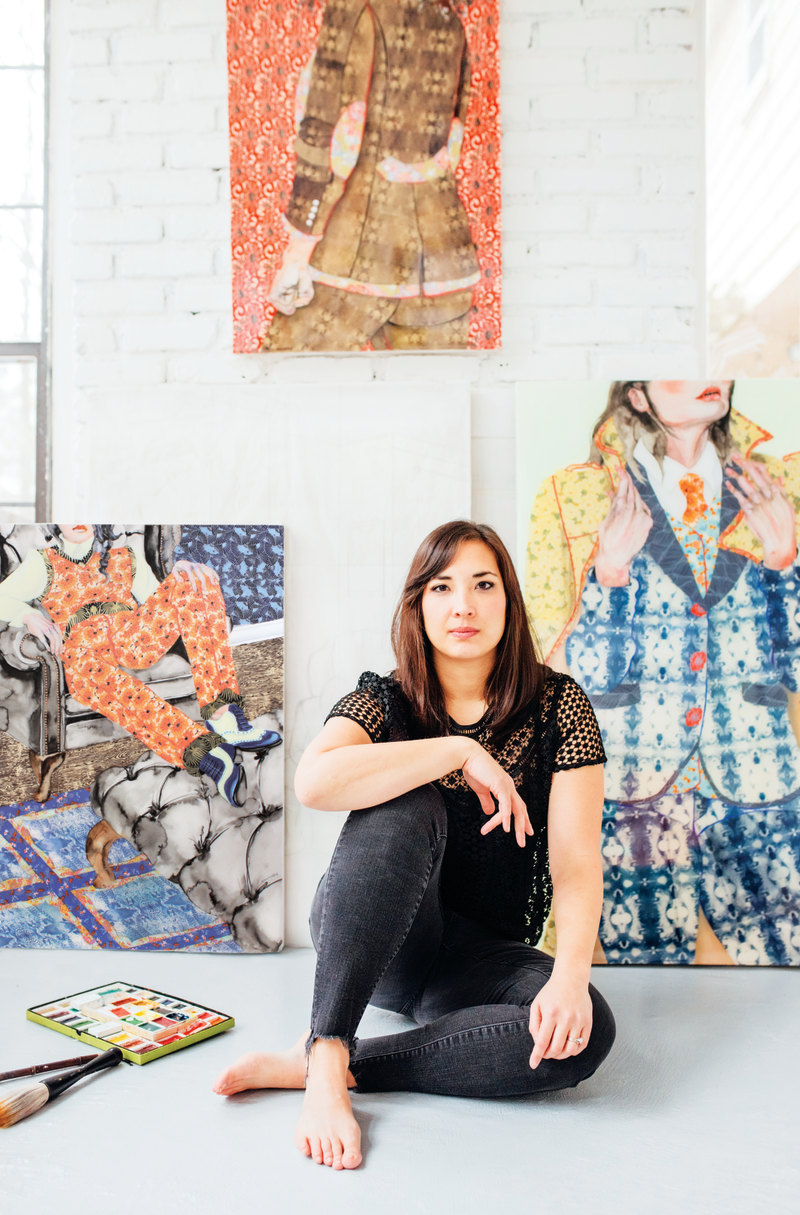Artist of the Month: Lisa Krannichfeld

A Southern artist with Chinese roots, Lisa Krannichfeld’s striking interiors and female portraits no longer beg the question who is in charge. Domesticated interiors no longer confine a woman to passiveness and service but rather commanding attention for just being. Her immensely detailed and colorful interiors create a beautiful space for a woman that radiates not mere beauty but strength and prowess. From the growling pets that line her subject matters to the overpowering stare of her female subjects, Lisa refuses to let women be put in soft and beautiful box anymore. Using Chinese watercolor ink, the Arkansas-based artist expresses strength through fluid materials and is redefining what the female gaze means today.
Tell us about this series of work. How did you come to develop this particular style?
A series I was doing before I started this work were studies on facial expressions done in a very loose, ambiguous way with color washes. I started to wonder if I could get the same strong emotional impact while focusing on body language instead of just faces. This led to creating whole environments for the figures in the form of rooms that also had expressive qualities infused into them. The pieces evolved into a rebellion on how women have historically been portrayed in domestic settings – usually very placid, docile, pretty and passive. This led to the title of the series, Undomesticated Interiors with the women commanding the space they occupy, with aspects of the room and their clothing making the viewer very much aware of this. Instead of women being visible very much for the viewer’s gazing pleasure, they almost give off an unwelcoming tone as if the viewer is encroaching on their territory.

Where do you source your materials?
I use both Asian and Western watercolors and brushes. Almost every piece is started with Chinese ink, which is the same ink that is used in traditional Chinese calligraphy and brush paintings. Most of the papers I use for collage are Japanese Chiyogami papers, but I also source papers from India, and elsewhere.
What is one artist living or dead you feel a great connection to? Someone who’s work has inspired your own practice and what you’re creating these days?
The artist that has probably influenced me most has been Egon Schiele. I discovered his work early on during college when I was just finding out that I too loved to draw the human figure most of all. He had a unique way of drawing that I had never seen before that I was instantly enamored with. Most artists focus on the making the human figure beautiful, but I, like Schiele, find more interest in communicating all kinds of expressions and emotions using the human figure beautiful or not.

What is your creative process?
I always start with a to-scale sketch of the piece I am starting so I can work out all the subtle gestures of the figure and how I want the viewer to experience space in the composition. This part probably takes the longest. After that I begin the wet-on-wet painted portions which involve a lot of water and pigment. This part has to completely dry before I do any collage work, which is the next step. I use various asian patterned papers and digitally manipulated cyanotypes. The final steps are mounting the painting on a cradled wood panel and covering it with a resin finish, usually multiple coats.

What is your approach to color?
I like to subtly play with complementary color schemes when I can in a work. It may be hard to notice since I use a heavy emphasis on pattern mixing but usually a piece of mine either has a play on red/green, blue/orange, or purple/yellow. I like the energy and tension these color schemes bring to a piece.
What influence does modern culture have on your work?
An underlying motive in my work is to widen the scope on how women are viewed and what they are valued for, shattering patriarchal views and stereotypes. Modern culture, especially in the last couple of years, have really added a sense of urgency to my motives fueling the fire to create more and more.


